 |
 |
 |
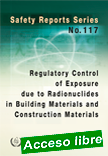 |
Regulatory Control of Exposure Due to Radionuclides in Building Materials and Construction Materials
IAEA Safety Reports Series No. 117 ¦ English ¦ STI/PUB/1992 ¦ 71 pages ¦ Date published: 2023
This Safety Report provides practical guidance to governments, regulatory bodies, other relevant competent authorities, and building and construction material industries on setting up arrangements for regulatory control relevant to building and construction materials that give rise to radiation exposures at any step in their life cycle.
|
These steps would include raw material production, manufacturing, supply and end use. It also considers the responsibilities of the suppliers of raw, waste or recycled materials for incorporation into building or construction materials, and it covers verification programmes for building and construction materials prior to their use as well as in completed construction projects.
|
 |
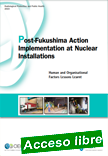 |
Post-Fukushima Action Implementation at Nuclear Installations: Human and Organisational Factors Lessons Learnt
OECD - Nuclear Energy Agency ¦ NEA No. 7578 ¦ Date published: 2023 ¦ 56 p.
This latest NEA report compiles and shares some of the lessons learnt from implementing post-Fukushima actions related to human and organisational factors (HOF), including at nuclear facility operating companies, technical support organisations, research institutions, and regulatory authorities.
|
It summarises a two-phase information-gathering exercise about the requirements and guidelines that countries and nuclear licensees have adopted since the accident.
The report discusses the central role of human and organisational performance in mitigating extreme external events and the management of severe accidents. It addresses the importance of validating the ability to perform these actions, and the challenges associated with performing such validations with fidelity to the conditions likely to be present during such events. The report concludes by providing four key recommendations that seek to promote greater sharing of information and the identification of best practices.
|
 |
 |
Handbook of Basic Quality Control Tests for Diagnostic Radiology
IAEA Human Health Series No. 47 ¦ English STI/PUB/2021 ¦ 208 pages ¦ 52 figures ¦ Date published: 2023
Medical X-ray equipment technology has evolved exponentially in the last decades, shifting steadily from analogue to digital radiology, from single slice to multidetector-row computed tomography or from fluoroscopy to complex angiography systems.
|
This, however, comes with associated radiation risk for patients and staff. It is therefore vital that all X-ray equipment is monitored in terms of performance to ensure accurate and safe use. Quality control (QC) represents the basic level of managing safety and quality in diagnostic radiology. This publication compiles all existing QC tests in literature for all X-ray modalities. To facilitate the use of this handbook, spreadsheets and video tutorials have been developed to help with the execution of tests.
|
 |
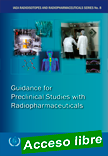 |
Guidance for Preclinical Studies with Radiopharmaceuticals
IAEA Radioisotopes and Radiopharmaceuticals Series No. 8 ¦ English ¦ STI/PUB/2031 ¦ 129 pages ¦ Date published: 2023
Preclinical or nonclinical evaluation is an integral part of the development of any drug. The process of developing a new radiopharmaceutical includes rigorous testing before it can be cleared for use in humans. . There must be in-depth characterization of its behaviour to assess its safety and suitability for the intended clinical application.
|
This publication provides a baseline guide for preclinical evaluation of radiopharmaceuticals that will give its readers a general review of the requirements of a facility and insight into the various scientific activities that constitute this process. The principles and protocols discussed herein will provide guidelines for biological assessment of candidate compounds, which are consistent with the principles of good laboratory practices to generate valid nonclinical scientific data towards approval for clinical translation. This publication is intended not only for researchers engaged in radiopharmaceutical development, but also for the Member States planning to set up or upgrade facilities for radiopharmaceuticals’ research.
|
 |
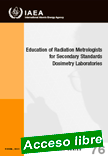 |
Education of Radiation Metrologists for Secondary
IAEA Training Course Series No. 76 ¦ English IAEA-TCS-76 ¦ 56 pages ¦ Date published: 2023
The aim of this publication is to provide guidance to authorities, and stakeholders responsible or interested, on how to fulfil the above need and to implement requirements of qualification and competence for the professionals working in SSDLs. However, this model can also be applied to other radiation physics laboratories.
|
A qualified radiation metrologist (QRM) is a 2 highly specialized professional who has undergone postgraduate academic education, followed by a structured and supervised practical training, to achieve independence in their profession whether it is in dosimetry, radioactivity and/or neutron measurements. In this publication the term ‘radiation metrologists’ and QRM are used for professionals working in a dosimetry laboratory, who are qualified and have mastered all the competencies needed for their role in the SSDL.
|
 |
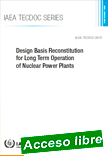 |
Design Basis Reconstitution for Long Term Operation of Nuclear Power Plants
IAEA-TECDOC-2018 ¦ English ¦ 84 pages ¦ Date published: 2023
A nuclear power plant design is the product of the activities of many organizations, and changes to that design will occur due to improvements or technical evolution continuously over the plant's lifetime. Changes can lead to a deterioration, or a loss of original design basis caused by inadequate configuration control processes. This necessitates a reconstitution of the design basis of systems, structures, and components to sustain the safe, reliable, and efficient operation and the plant performance.
|
This publication presents essential elements such as the drivers, goals, methods, roles, responsibilities and interfaces for conducting an effective design basis reconstitution. It also describes current challenges, operating experience, good practices, and lessons learned associated with design basis reconstitution for long term operation. The publication has been written for all those involved in assessing, updating, and implementing design basis reconstitution practices.
|
 |
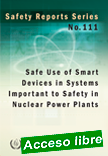 |
Safe Use of Smart Devices in Systems Important to Safety in Nuclear Power Plants
Safety Reports Series No. 111 ¦ English ¦ STI/PUB/1975 ¦ 103 pages ¦ 13 figures ¦ Date published: 2023
With rapidly advancing digital technologies, smart devices are increasingly used in nuclear power plants. These smart devices can be implemented as separate or standalone field components or embedded as components in other equipment or systems and can be used to increase plant reliability, enhance safe operation and improve testing and monitoring functions. However, the use of smart devices may potentially introduce new hazards, vulnerabilities and failure modes.
|
The safety aspects and design criteria associated with the safe use of industrial commercial smart devices in systems important to safety considered in this publication include: functional suitability and the evidence required to demonstrate this suitability, quality, qualification, the consideration of certification by non-nuclear organizations using non-nuclear standards, and aspects affecting integration of the smart device into existing systems in order to ensure that the smart device will retain its suitability for the required lifetime.
|
 |
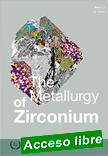 |
The Metallurgy of Zirconium
IAEA STI/PUB/1943 ¦ 1239 pages ¦ 989 figures ¦ Date published: 2023 ¦ 3 volumes
This publication provides readers in industry and academia with a comprehensive review of the development and understanding of zirconium within the context of it use in nuclear reactors. It presents input from leading experts in the relevant fields and encompasses the full spectrum of zirconium as a metal, its properties and use.
|
It is unique in the breadth of its scope. The publication’s coverage includes: alloy development in the nuclear industry and guidelines on commercial alloys and alloys under development; extraction and consolidation of zirconium, from ore to ingot to component; deformation and texture of various alloys with analysis of the effects of irradiation damage on physical and mechanical behaviour as well as deformation and creep during irradiation and damage due to oxidation and corrosion; and ductility and fractures of alloys.
|
 |
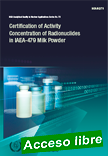 |
Certification of Activity Concentration of Radionuclides in IAEA-479 Milk Powder
IAEA Analytical Quality in Nuclear Applications Series No. 70 ¦ English ¦ IAEA/AQ/70 ¦ 28 pages ¦ Date published: 2023
To meet the IAEA Member States’ needs for a certified reference material (CRM) of short-lived radionuclides in milk powder following the Fukushima Daiichi nuclear accident, the Terrestrial Environmental Radiochemistry Laboratory (TERC) prepared IAEA-479 CRM as a replacement of the previous out-of-stock material IAEA-473. Its matrix is a full fat milk powder from which milk with a fat content 3.5% can be reconstituted. This CRM contains one radio-strontium isotope 90Sr as a typical
contaminant in milk during and after a nuclear emergency.
|
To simulate real acidental circumstances, both radio-caesium 134Cs and 137Cs are added to the CRM. 131I is also na important radionuclide in nuclear accidents, however considering its short half-life it is not possible to include it in a CRM. Therefore 133Ba was added which has similar characteristics in terms of radiation energy, to simulate the presence of 131I in the CRM. This publication presents the preparation methodology, materials, and assignment of property values and their associated uncertainties for 90Sr, 133Ba, 134Cs, and 137Cs. The milk powder also contains readily detectable 40K due to its high natural potassium content, and its activity concentration has been determined by measurement of four samples. The activity concentration of 40K is included as an information value of the CRM. Similarly to IAEA-473, IAEA-479 CRM can be used for the verification of performance indicators (precision, repeatability, reproducibility) of 90Sr in presence of radio-caesium and 133Ba isotopes.
|
 |
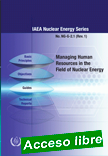 |
Managing Human Resources in the Field of Nuclear Energy
IAEA Nuclear Energy Series No. NG-G-2.1 (Rev. 1) ¦ English ¦ STI/PUB/1958 ¦ 87 pages ¦ Date published: 2023
This publication provides guidance on the management of human resources in the field of nuclear energy. It considers this issue at both the individual and organizational level, and the development of an appropriate human resource management (HRM) strategy. It elaborates on ten key HR processes concerning the management of individual employees, as well as the four broader organizational issues – organizational and safety culture, stakeholder engagement, diversity and inclusion, and change management – to which they relate.
|
It describes the importance of having a correct HRM strategy is in place, together with the right level of competent resources, effective processes, and procedures, to support the needs of nuclear organizations.
|
 |
| |
|
|

|
|
|
| |
|
|
| |
| |
|
|
| |
| |
|
|
| |
| |
|
|
|
| |
| |
